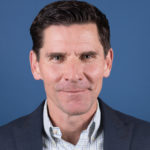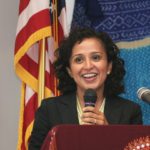From your perspective, what are the most effective means of keeping people out of poverty? What are the most effective means of lifting people out of poverty?
Campbell Poverty Q1

Creating a regulatory, tax, and governmental environment that welcomes job-creation in California is the best way to keep Californians out of poverty. Yet, in large part responsive to understandably compassionate instincts, our government tends to go directly to wealth transfers, without realizing the importance of wealth creation.Without wealth creation in society there cannot be wealth redistribution. California government has come to view businesses and business leaders as ATM’s to fund social programs. If, instead, we had more businesses choosing to locate in, and not to move from, California, we would greatly reduce the call for such social programs.
Expanding the earned income tax credit is much wiser than increasing the minimum wage. The former uses general tax money (that we all pay) to help someone with a low-paying job earn more. The latter punishes the very entity that is offering a job to someone who needs it.
Buiza Poverty Q1

1) A cross-sectoral approach that looks at the nexus and connections between health care, including preventative care, housing, education, wage gaps and access to public transportation.
2) More public-private partnerships and a greater focus on regional disparities that addresses the unfair and inequitable distribution and access to resources in hard to reach regions.
3) Streamline and increase funding for community colleges and open up workforce development programs to low wage-immigrant workers regardless of immigration status.
Swaim Poverty Q1

Liberate markets. Is it old news now that democratic capitalism has lifted hundreds of millions out of poverty?
Hernandez Poverty Q1

Each year, the Los Angeles County Business Federation, BizFed, a grassroots alliance of 180 business organizations representing 400,000 employers that employ 3.5 million Angelenos, conducts its “Pulse Poll,” meant to gauge the temperature of the business community and the issues affecting the industry.
In the 2019 poll, BizFed members identified the top issues to address as the imminent need to effectively combat poverty and promote economic mobility. The top responses include 1) focusing on career and technical training as well as industry-specific apprenticeships, 2) increasing viable childcare options for working families and single-parent households, and 3) guaranteeing our safety net services are both efficient and effective.
Furthermore, we engaged poverty experts to help deepen our understanding of the drivers of poverty in Los Angeles County. Based on their insights, we have identified advocacy opportunities to focus on the populations who have capacity for quickest change result, such as the working poor, single parents, and immigrants.
By providing affordable access to childcare and housing, while accelerating the naturalization process, and (to our surprise about the level of impact) providing continuing access to English as a Second Language (ESL) programs, we can make a real difference in assisting these individuals to escape or avoid poverty.
We are committed to lifting 1 million Angelenos out of poverty in the coming decade through job growth as well as policies and regulations that promote affordability in all aspects of life, investment in all levels of workforce development in order to accelerate job growth, and effective and efficient services for all Los Angeles County residents.
Dunn Poverty Q1

Studies show that education is key–staying in school, graduating from high school, going on to community college and university–each level of academic achievement ensures opportunities for higher earnings and valuable skills for employment.
Foo Poverty Q1

As communities and policymakers, we need to work together to transform all the influences to the communities well-being. It’s not just giving a job and housing, its changing the environment and opportunities for community members. Accessible transportation, jobs in local neighborhoods not where you have to take four different buses and spend multiple hours getting to work. Also, having schools as the center of communities, parent engagement, having the school property open on the weekends for family sports, gatherings, use of computer labs, etc. Keeping people out of poverty is complicated and not an easy fix. Everyone needs to come together. It’s easy to blame families but when there are no resources or cities are focused on development to create more opportunities for businesses and corporations for revenue, we’re not investing back into families and individuals. Encouraging civic engagement especially for young people to understand policy and systems change and how poverty isn’t about individuals not wanting to work, it’s about long term impact from state and national policies that impact the economy, neighborhoods, and families.
McKellogg Poverty Q1

As the 2019 Nobel prize winning economists of the Poverty Action Lab found, job creation and access to employment are key factors in keeping low-income people out of poverty. Data from the Census Bureau showed the official poverty rate in the U.S. dropped to 11.8% in 2018, the lowest since 2001 and the fourth annual decline in the national poverty rate. Employment opportunities and higher minimum wages were two key factors that helped some rise above the poverty threshold during this period. The ability to generate income through work is both the immediate solution to keep people out of poverty and the dividing line for access to services and subsidies which help protect families from the effects of poverty. Because many public supports (subsidized housing, childcare and food assistance) are calculated based on income, people who go to work in low-wage jobs are often faced with a “benefits cliff” where a small increase in hourly wages means they lose access to these public benefits, creating a net negative impact on low-income employees.
Summers Poverty Q1

People have struggled with how best to deal with poverty since the earliest societies, but the answer is apparent if we merely look to history. From the Renaissance to the Industrial Revolution to modern times, poverty has been most radically and rapidly alleviated whenever people are free to work in an occupation of their choosing, keep the fruits of their labors, acquire and maintain private property, and rely on a stable legal system to protect their personal and economic freedoms.
In recent decades, this age of relatively free enterprise and global trade has resulted in an unprecedented reduction in poverty. This may come as a surprise to many who have heard the narrative, popular in the media and certain circles of academia, which claims that not only are the rich getting richer, but the poor are getting poorer. Indeed, when a survey by Hans Rosling for Gapminder asked people whether the portion of the world’s population living in extreme poverty had a) almost doubled, b) stayed about the same, or c) almost halved over the last 20 years, only 5 percent of Americans correctly answered that it had been virtually cut in half. According to World Bank estimates, the portion of those living in extreme poverty, defined as living on less than $1.90 a day, has steadily declined from 36 percent in 1990 to 10 percent by 2015 (and an estimated 8.6 percent in 2018) – the lowest level in recorded history. In all, 1.1 billion people rose out of extreme poverty in just a quarter-century – a tremendous achievement! Moreover, 80 percent of those who remain in extreme poverty are concentrated in Sub-Saharan Africa and South Asia, primarily in countries typified by war, corruption and a lack of economic liberty.
These results are bolstered by various freedom indexes, such as the Fraser Institute’s annual Economic Freedom of the World (or its Human Freedom Index, which includes measures of personal freedom in addition to economic freedom). Such studies consistently show an incredibly strong correlation between nations that offer greater economic and personal freedom and desirable traits like higher per-capita income and economic growth, lower levels of poverty, greater life expectancy, lower infant mortality rates, greater equality between the genders and generally higher levels of happiness.
So while many focus on the next government program that they are sure will be the silver bullet to alleviate poverty, the best solution is to simply create the conditions that allow people to thrive by eliminating government laws and regulations that exacerbate poverty by restricting economic and personal liberties.
Kotkin Poverty Q1

High-paying blue collar work is the key. Right now we are producing some very high paid work (mostly in the Bay Area) but 80 percent of jobs pay below medium and half of those pay under $40,000. Those are essentially working poverty levels. There also needs to be more emphasis on practical training in the schools, rather than the current emphasis on indoctrination. Finally we have to keep chasing away mid-level employment, such as Toyota, Bechtel, Parsons, Mitsubishi, Nissan, and many more. These firms provide long-term steady jobs at different skills levels.
Rutherford Poverty Q1

Education is critical to helping people avoid poverty. Not everyone needs a college degree to get a good job, but when they can’t read proficiently or do simple math, they are more likely to be impoverished, and when their children grow up in poverty, those children are more likely to fall behind in school and follow the same course as their parents. Everyone needs to graduate from high school, and many should take advantage of additional vocational training, especially from our community colleges, which offer an incredible variety of certificates and training programs that allow people to gain marketable skills.
A lack of financial literacy is one of the key factors that keeps people in poverty and often leads people into it as well. When people don’t understand how to use credit, how to budget, or how to use compound interest to their advantage, they can quickly get themselves into financial trouble that will follow them the rest of their lives.
Bornstein Poverty Q1

Providing a healthy, safe home at a price affordable to very low and extremely low income households. If families pay no more than 30% of their income for rent or mortgage, they have the majority of their income available for healthy food, health care, transportation and even a modest savings account.
———————————–
Additional thoughts
Stable and decent housing affordable to even the lowest of income households. When shelter is appropriately sized for the number of persons living there, rent or mortgage no more than 30% of the household income and healthy for the occupants, students do better in school, there are fewer health challenges for household members and attendance at work is more reliable. A safe, stable and affordable home is the best foundation for escaping poverty.
Painter Poverty Q1

A person’s most direct way out of poverty is to have a job that pays a living wage. Acquiring the skills and overcoming structural barriers for some will take time. Therefore policy must focus on these pathways.
In the short run, a more robust Earned Income Tax Credit would reduce poverty for those that are able to work. For those that are not able to work, improving the generosity of disability insurance would be helpful.
Bradbard Poverty Q1

Poverty, like many societal ills, is a multifaceted issue. It does not result from one simple cause, which means there is no one simple solution. We also know that an individual or family typically does not find themselves living in poverty overnight and there are many factors that can keep a person or family in their current situation.
Therefore, when considering strategies for preventing poverty and lifting people out of poverty, we have to take a long-term view. We must ensure there is a safety net for those in crisis while focusing on the creation of a workforce that encourages and supports work that results in living wages. To reach that goal, we need a strong ecosystem including quality education, basic needs support, quality housing, mental and physical wellness, transportation, child care, and the availability of jobs that pay a family-supporting wage.
Kulkarni Poverty Q1

The most effective means of poverty include funding a strong public education system from preschool through college, increasing the minimum wage, providing universal healthcare and offering many more housing assistance vouchers and mandating some forms of rent control. To lift individuals out of poverty, we need many of those tools, but also free tuition at public universities, access to public benefit programs and housing vouchers that enable individuals to live in low-poverty neighborhoods.
Jordan Poverty Q1

One of the best ways to keep people out of poverty is to position them so they have every opportunity to succeed and achieve financial security and family stability. Folks need employment opportunities, housing opportunities and opportunities to better themselves by getting an education. But more than eight million Californians and 70 million people across the country living with a past conviction are barred from these opportunities because of a past mistake. These are folks who have long since completed their sentence and who just want the opportunity to move on with their lives. Nationally we lose 87 billion dollars in GDP every year because we exclude people with past convictions from the workforce. That has to change. We need to commit to enabling people to overcome past mistakes and move on with their lives successfully.
Shelley Poverty Q1

Job opportunities will lift and keep people out of poverty. Education and training can help people develop and maintain skills to get the jobs they want and to achieve income growth and advancement.
A steadily improving economy and a relatively competitive labor market will provide many different opportunities, enabling people to have the freedom and confidence to change jobs. The tighter the labor market, the better the opportunities. In a rapidly growing economy, employers will sometimes offer training and pay for education, creating even more opportunities. So government policies should encourage economic growth and not stifle it with high taxes or excessive regulatory burdens.
Not everyone can be lifted out of poverty by employment opportunities, however. Some people are in poverty because of non-economic factors – health, substance abuse, or family issues, for example. Economic growth provides the public and private revenue to make it possible to have a generous safety net to help people who are in difficult circumstances.
The worst way to provide both job opportunities and safety-net programs is to treat businesses like criminals, harassing and hounding them until they close down or leave California. That causes a downward spiral – more people falling into the safety net, but less revenue to pay for it. Raising taxes on businesses exacerbates the problem by causing higher prices, raising the cost of living. California has the highest poverty rate in the country when the cost of living is taken into account. The wrong government policies actually push people into poverty.
Pastor Poverty Q1

The first thing we need is a big shift in mindset: we tend to think of poverty as an unfortunate result of our economy instead of understanding the disequalizing forces that have caused California to become the fourth most unequal state in the union. Poverty is not so much a bug as it is a feature of way the contemporary state economy generates unstable employment, low wages, and insecure housing. In order to truly tackle poverty, we need to adopt economic strategies that put equity at the center rather than as an afterthought to promoting growth – and this is a big shift in both our thinking and our policy-making. The second thing we need is a big shift in that policy framework: we tend to think that we need to focus on finding a “silver bullet” that will address the issue – say, better education. But any parent knows that you don’t think just one factor will improve your child’s chances and any business knows that its success depends on pleasing customers, employees, and suppliers alike. The implication for anti-poverty efforts – we need to slog our way through a full range of policies, including raising the minimum wage, spreading pre-K, supporting community college, attracting advanced manufacturing, promoting immigrant integration, employing the formerly incarcerating, assisting families through hard times, and so much more.
Salas Poverty Q1

The most effective means of keeping people out of poverty begins with providing people with quality, government funded education pre school to colleges that prepares them for the workforce and opens up opportunities to economic opportunity. Prosperity comes from good paying jobs, supports for entrepreneurs and a robust safety net system. It also means that all who work have access to these opportunities. There is also equal pay for all independent of gender or race. People will be lifted out of poverty when we pass just and humane immigration policies that end workplace exploitation of immigrant workers who without legal immigration status are vulnerable and subjected to abismal wages.